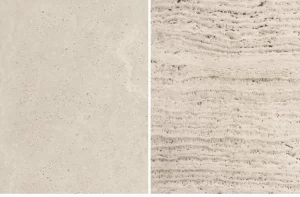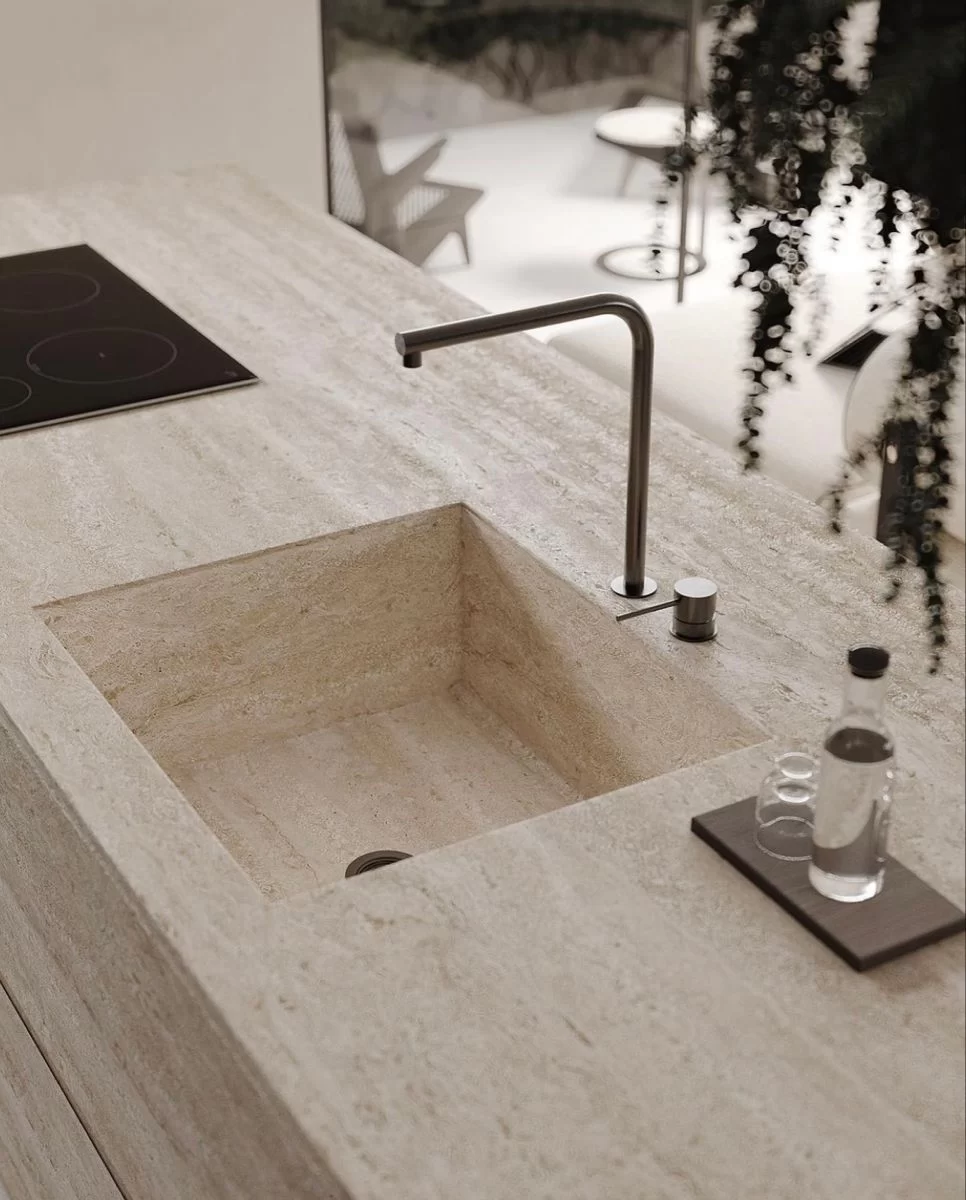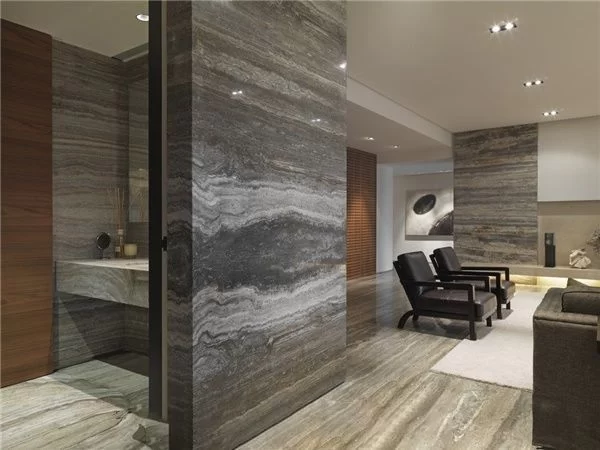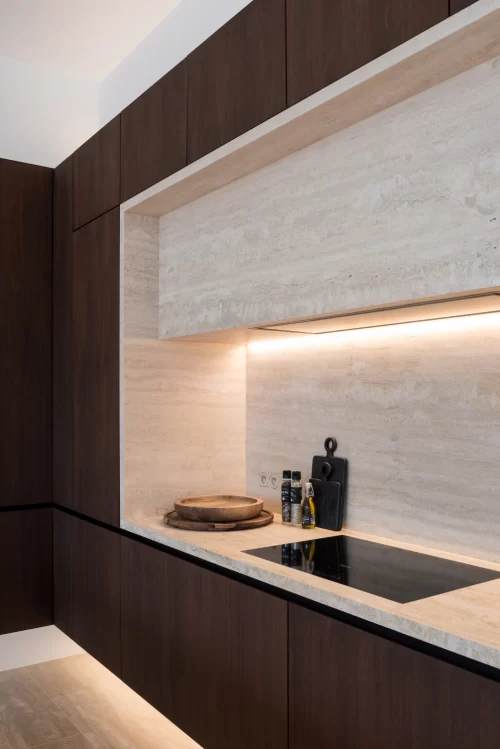Introduction: Understanding the Distinctions Between Travertine and Marble
Travertine and marble are two popular natural stones used in various architectural and design applications. While they share some similarities, it is important to understand the distinctions between these stones to make an informed choice for your project. When comparing the qualities of travertine and marble, there are a few key distinctions to consider.
In this article, we will delve deeper into the various aspects of travertine and marble to provide a comprehensive comparison of their qualities. By examining their appearance, durability, porosity, maintenance requirements, and cost, readers will gain a better understanding of which stone may be more suitable for their specific needs and preferences.
Whether you are considering these stones for flooring, countertops, or other applications, this article aims to equip you with the necessary knowledge to make an informed decision. By gaining a deeper understanding of these qualities, you will be better equipped to select the stone that best suits your aesthetic preferences, functional needs, and budget. So, let’s dive into the world of travertine and marble and unravel their unique characteristics.
Composition and Formation: Exploring the Geological Differences
Marble and travertine are distinct in their composition and formation, which contributes to their unique characteristics and appearances. Understanding the geological differences between these stones can provide valuable insights into their suitability for different applications.
Marble is a metamorphic rock primarily composed of recrystallized carbonate minerals, such as calcite or dolomite. It forms when limestone or dolomite undergoes intense heat and pressure over thousands of years. This process causes the minerals to recrystallize, resulting in the characteristic interlocking crystalline structure seen in marble. The presence of impurities and minerals within the original limestone or dolomite can give marble a wide range of colors and veining patterns.
On the other hand, travertine is a sedimentary rock formed from the precipitation of calcium carbonate. It typically originates from mineral-rich hot springs or limestone caves. As water flows through these environments, it carries dissolved minerals and deposits them as layers of sediment. Over time, these layers compact and harden to form travertine. The unique feature of travertine is its porous nature, which is often visible in its distinctive pitted surface texture.
The differences in composition and formation contribute to variations in the physical properties of marble and travertine. Marble tends to have a denser and more uniform structure, making it highly suitable for applications requiring a polished and refined appearance. Travertine, with its porous nature, offers a more textured and rustic look, often sought after for its natural charm.
Appearance and Aesthetics: Contrasting the Visual Characteristics
Marble and travertine exhibit contrasting visual characteristics, adding to their distinct aesthetic appeal. Understanding these differences can help in selecting the right stone for various design applications.
Marble is renowned for its luxurious and elegant appearance. Its smooth and polished surface showcases a wide range of colors, including white, grey, beige, and even vibrant hues like green and red. The interlocking crystalline structure of marble creates beautiful veining patterns, which can be subtle or bold, depending on the type of marble. These veins can be linear, wavy, or even resemble intricate landscapes, adding depth and visual interest to the stone. The polished finish of marble enhances its natural luster, giving it a timeless and sophisticated look.
In contrast, travertine offers a more rustic and earthy aesthetic. Its distinctive pitted surface texture, caused by the presence of cavities and voids, creates a unique visual appeal. These cavities can be filled with grout or left unfilled, depending on the desired look. Travertine is commonly available in shades of beige, tan, silver, and cream, imparting a warm and inviting feel to spaces. Its natural color variations and subtle veining patterns contribute to a more organic and textured appearance. The honed or tumbled finishes often used for travertine highlight its natural beauty and provide a more relaxed and casual ambiance.
Both marble and travertine offer diverse options for design and can be used in various applications, including countertops, flooring, wall cladding, and decorative accents. The choice between the two depends on the desired aesthetic, as well as factors such as durability, maintenance requirements, and the specific design vision for the space.
Overall, marble exudes a refined and luxurious aura, while travertine brings a warm and rustic charm to interiors. By considering these visual characteristics, one can make an informed decision when selecting between marble and travertine for their design projects.
Durability and Strength: Assessing the Resilience of Travertine and Marble
When it comes to durability and strength, marble and travertine have some differences to consider.
Marble is generally considered to be a more durable and stronger stone compared to travertine. It has a higher density and hardness, making it less prone to scratching, chipping, and cracking. Marble is also more resistant to heat, which makes it suitable for use in kitchens and areas where hot objects may come into contact with the surface.
Travertine, on the other hand, is a softer and more porous stone. While it is still a durable material, it is more susceptible to scratches, chips, and cracks compared to marble. The pitted surface texture of travertine can also make it more prone to wear and tear over time. However, with proper care and maintenance, travertine can still last for many years.
It’s important to note that both marble and travertine are natural stones, and their durability can vary depending on factors such as the specific type of stone, its quality, and how well it is maintained. Sealing the stone can help enhance its durability and protect it from stains and damage.
In terms of resilience to moisture, both marble and travertine are porous stones and can be susceptible to water damage if not properly sealed and maintained. It’s crucial to ensure that any spills are promptly cleaned up and that the stone is regularly sealed to prevent moisture absorption.
Overall, while marble tends to be more durable and stronger than travertine, both stones can be suitable for various applications depending on the specific needs and preferences of the project. Consulting with a stone professional or supplier can provide more specific information and guidance based on your requirements.
Applications and Usage: Examining the Ideal Uses for Travertine and Marble
Travertine and marble have different characteristics and appearances, which make them suitable for various applications and usages. Here are some ideal uses for each stone:
Travertine:
- Flooring: Travertine is ideal for flooring due to its natural beauty and warm tones. It can create a rustic or Mediterranean ambiance in both indoor and outdoor spaces.
- Wall Cladding: Travertine can create stunning feature walls, accent walls, or fireplace surrounds.
- Countertops and Vanity Tops: Although not as durable as marble, travertine can still be a good match for countertops and vanity tops in areas with low traffic or where a more natural and organic look is desired.
- Outdoor Paving: Travertine’s natural resistance to heat makes it an excellent choice for outdoor paving, such as patios, pool decks, and pathways.
- Shower and Bathroom: It is also suitable for shower walls, bathroom floors, and backsplashes.
Marble:
- Flooring: Marble is a popular choice for high-end flooring due to its elegance, timeless appeal, and durability. Builders use it in various areas, including foyers, living rooms, and bathrooms.
- Kitchen Countertops: Marble countertops create a stunning look in kitchens. However, it’s important to note that marble is more susceptible to staining and etching from acidic substances, so proper care and maintenance are essential.
- Fireplace Surrounds: Marble’s heat resistance makes it an ideal choice for fireplace surrounds, adding a touch of elegance and grandeur to the room.
- Bathroom Vanities: Marble bathroom vanities create a spa-like atmosphere, elevating the overall aesthetics of the space.
- Sculptures and Decorative Pieces: Marble has been used for centuries in sculptures and decorative pieces due to its beauty and workability. It can be carved and shaped into intricate designs, making it a popular choice for art and architecture.
It’s important to consider the specific type and quality of the stone, as well as its maintenance requirements when choosing between travertine and marble for different applications. Consulting with a stone professional or supplier can provide further guidance based on your specific needs and preferences.
Cost and Value: Analyzing the Price Factors and Long-Term Investment
When considering the cost and value of travertine and marble, there are several factors to analyze:
- Material Cost: The price of travertine and marble can vary based on factors such as quality, rarity, and source. Marble is generally more expensive than travertine due to its luxurious reputation and higher demand.
- Long-Term Investment: Both travertine and marble can add value to a property. Marble is often seen as a high-end material and may have a higher resale value. However, the value will also depend on factors such as location, overall design, and market demand.
- Aesthetic Appeal: The choice between travertine and marble often comes down to personal preference and the desired aesthetic. Marble is known for its lavish appearance, while travertine offers a more natural and rustic look. Consider the overall design and style of your space when making a decision.
Ultimately, the cost and value of travertine and marble will depend on your specific needs, budget, and long-term goals. It’s important to weigh the initial investment, maintenance requirements, and overall aesthetic appeal to make an informed decision.
Popular Types of Marble and Travertine: Pietra Grey Vs Silver Travertine
Let’s explore two popular types of marble and travertine as an example, Pietra Grey marble and Silver travertine. Although both these natural stones offer unique aesthetics and can enhance the beauty of any project, they differ in characteristics.
Pietra Grey marble is a popular type of Iranian marble known for its stunning dark grey color with white veining. It has a sophisticated and elegant appearance, making it a sought-after choice for countertops, flooring, and wall applications.
Silver travertine is a popular type of travertine known for its silver-grey color with subtle variations and vein patterns. It has a natural and rustic look, adding character and charm to any space. Silver travertine is commonly used for outdoor applications such as pool decks, patios, and pathways, but it can also be used indoors for flooring and wall cladding.
Conclusion: Making an Informed Decision Between Travertine and Marble
In conclusion, both travertine and marble have their own unique qualities and advantages. Marble offers a cultivated appearance with a wide range of colors and veining patterns, suitable for high-end residential and commercial spaces. However, it requires regular maintenance and is more prone to scratching and staining. On the other hand, travertine has a rustic and earthy look, with natural pits and voids, and is more affordable than marble. It is a durable material but may require more maintenance. Ultimately, the choice between travertine and marble depends on your personal style, budget, and the specific requirements of your project. It’s advisable to seek professional advice from a stone supplier or designer to make an informed decision.





